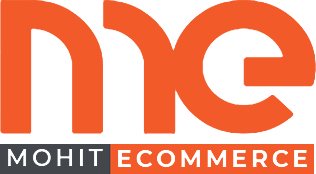In recent years, supply chain shortages have become increasingly common and impactful for businesses of all sizes, due in large part to disruptions caused by the COVID-19 pandemic. From manufacturing delays to transportation issues, these shortages can result in lost sales, decreased revenue and unhappy customers. But there are strategies businesses can implement to mitigate the impact of supply chain shortages and keep their operations thriving.
Whether you’re a small business owner or part of a large multinational corporation, understanding how to effectively manage your supply chain is essential for success. In this blog post, we’ll explore some of the key strategies businesses can use to address supply chain shortages and emerge stronger on the other side.
Understanding the Impact of Supply Chain Disruptions
The impact of supply chain disruptions can be severe, both operationally and financially. Planners must take a proactive approach and address key issues such as demand fluctuations and risk evaluation. Using technology and AI-enabled mapping can help identify potential threats and vulnerabilities in the supply chain.
The goal is to build resilience and agility in the supply chain so that unexpected disruptions can be navigated effectively. In this blog, we will explore key strategies such as short-term storage solutions, on-shoring and near-shoring, and effective logistics to help mitigate the impact of ongoing supply chain disruptions. By investing in the right technology and adopting Gartner’s research on emerging trends, businesses can take proactive steps to build a more resilient and agile supply chain.
Addressing Demand Fluctuations: Short-term Storage Spaces and Partnerships
In the previous section, we discussed the importance of strategically allocating inventory in the near term to protect your supply chain from disruptions. However, fluctuations in demand can still occur, and businesses need to be equipped to address them quickly and efficiently. One solution is to utilize short-term storage spaces and partnerships.
By having access to flexible storage options, businesses can hold inventory until demand picks up, saving them from revenue loss due to stock shortages. They can also partner with other businesses to share storage spaces and avoid the higher costs of renting dedicated spaces. These strategies not only help keep your supply chain running smoothly but also allow for cost savings and stronger partnerships with other businesses.
Boosting Domestic Production through On-shoring and Near-shoring
In the midst of supply chain disruptions, businesses are looking for ways to maintain their operations and satisfy their customers’ needs. One solution is on-shoring or near-shoring, which refers to bringing the production of goods back to the company’s home country or relocating it to nearby countries. This strategy helps businesses reduce production costs, improve quality, and secure their supply chain. Additionally, on-shoring and near-shoring can be an effective way to respond to the fluctuations of demand, as businesses can quickly adjust production based on market demands.
By implementing these strategies together with short-term storage spaces and effective logistics, businesses can keep their operations thriving and ensure their customers’ satisfaction. It is possible to mitigate the impact of supply chain disruptions and secure the future of your business with the right planning and strategies.
Easing Transportation Jams: Strategies for Effective Logistics
In order to keep your business running smoothly during times of supply chain shortages, it is essential to have effective strategies for easing transportation jams. This means finding alternate transportation routes to avoid congestion and delays, as well as prioritizing public health and safety in the movement of goods. Automating your supply chain management is also a smart investment in optimizing efficiency and cost-effectiveness. But transportation is just one piece of the puzzle.

